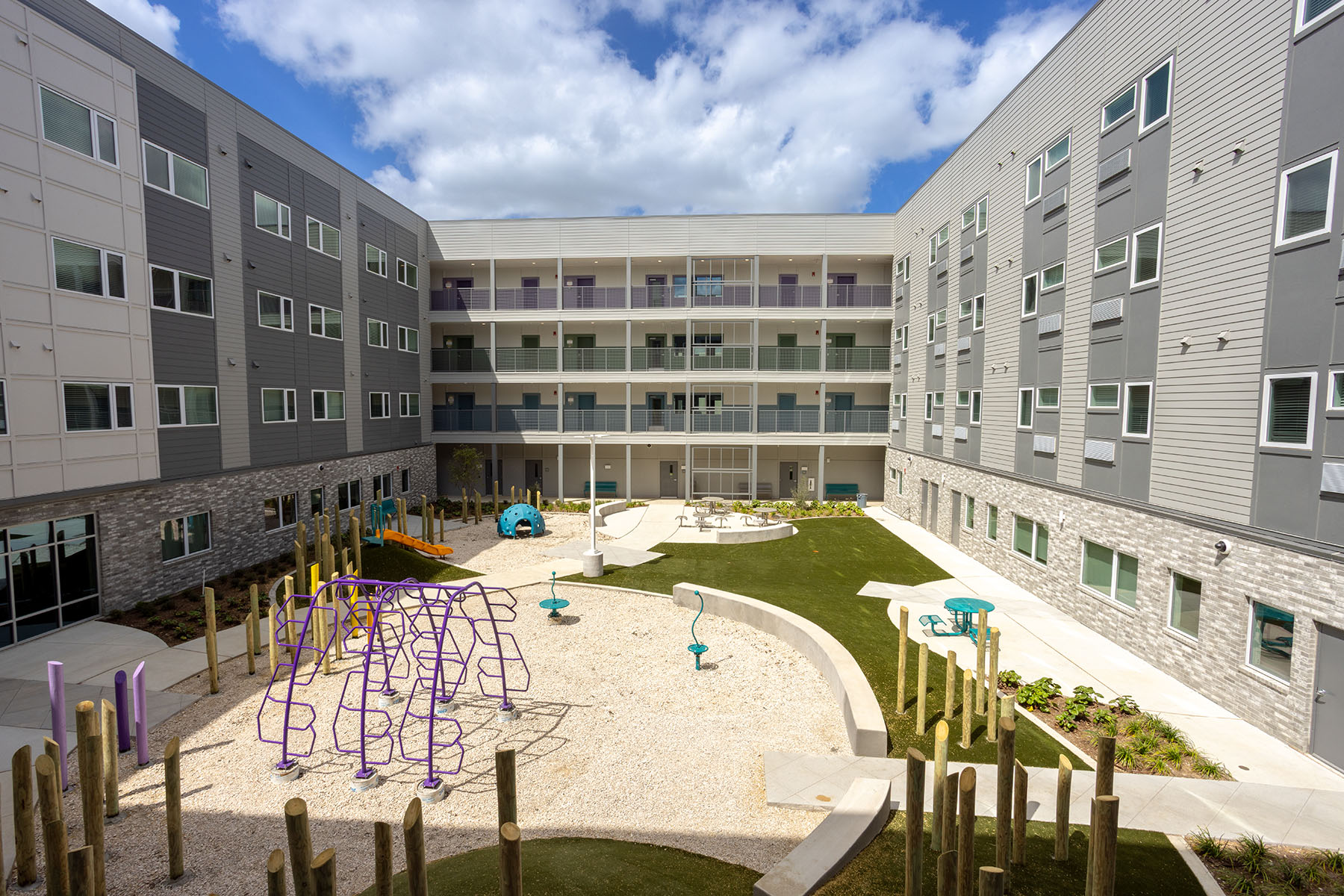This story was originally published by Next City, a nonprofit newsroom reporting on solutions for equitable and just cities. Get Next City’s stories in your inbox: nextcity.org/newsletter
When the Houston Area Women’s Center (HAWC) began exploring the idea of an open domestic violence shelter — a shelter with a publicly listed address — no one was more wary than the person put in charge of leading the effort.
“I was probably the perfect person to do the research, because I was not for it,” says Sonia Corrales, interim president and CEO at HAWC. What if an abuser showed up and hurt someone? How do you ensure survivors’ safety and confidentiality?
“I was like, this is not going to happen, there’s just no way.”
But after a few months, she found reason to believe. Research shows that survivors feel more empowered when they don’t have to stay hidden in shelters. Traditional domestic violence shelters are isolating and can feel oppressive to survivors, in some cases recreating the dynamics that existed in the abusive relationship.
That’s because traditional shelters have strict rules that are supposed to ensure the safety of residents. If survivors don’t follow them, they risk getting kicked out. As a result, traditional shelters often cut survivors off from their support networks. The isolation that results from this, and the secrecy of their living situation, can result in survivors feeling more shame about their situation.
In March, after years of research and coordination, HAWC opened One Safe Place, an expansion of their 5.5-acre campus in South Houston supported by a $16 million injection from the city. Here, survivors can leave campus to visit friends and family without penalty. And if survivors share where they live with their support network, they don’t risk being asked to leave the shelter.
These open shelters go by different names — disclosed, unconcealed, listed — but the idea is the same. It’s a model slowly gaining popularity across the United States. Similar shelters exist in Fort Bend, Texas; Bozeman, Montana; and Park City, Utah.
More than a third of women and a quarter of all men in the United States experience intimate partner violence in their lifetimes. In Texas, domestic violence has steadily risen since 2017. Out of 205 intimate partner homicides in 2023, 38 took place in Harris County, where Houston is. Thirty-five of those people were women.
At One Safe Place, survivors walk outside with their children in tow and enjoy the butterfly garden, or the playground and basketball court. Residents can get their hair done at the salon on site, talk to an attorney or access health care on their own time.
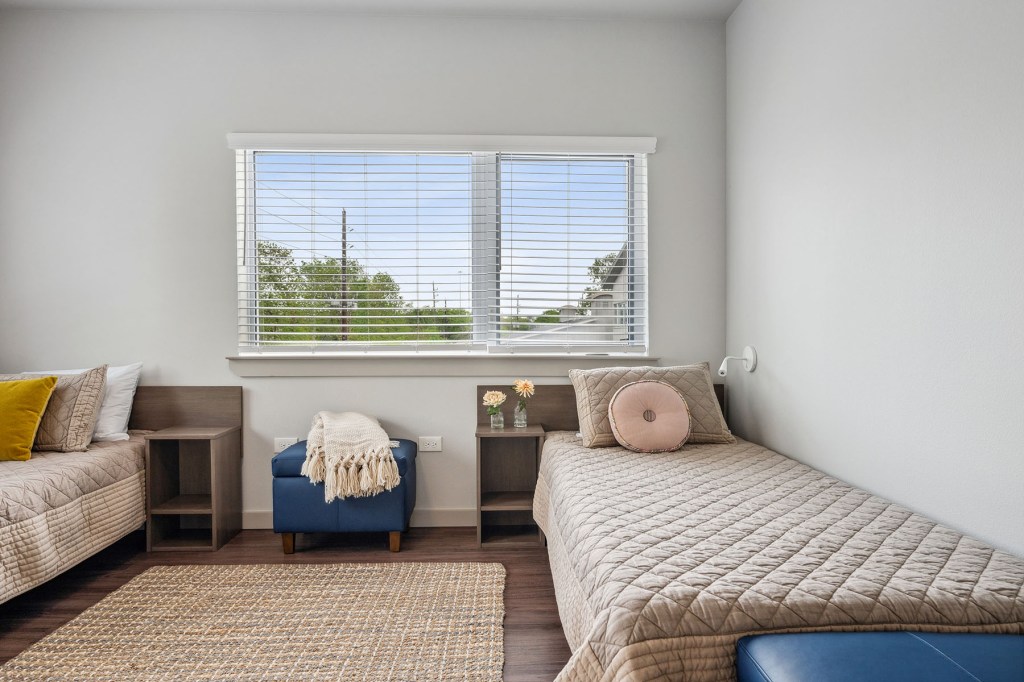
One Safe Place has space for 360 adults and children. For families, there are 90 emergency one-bedroom apartments, and about 90 beds for single people seeking shelter. Each guest receives three meals and two snacks a day and has access to a bodega with free items for their stay.
Lisa Goodman, a doctoral professor at Boston College who specializes in intimate partner violence, says that to empower survivors, domestic violence shelters must understand that survivors can identify their own needs and goals. And studies show that open shelters can help facilitate that.
In a qualitative study on open shelters published in 2020, domestic violence shelter leaders said that secret shelters don’t always consider the importance of community support for survivor safety. Secret shelters may require a survivor to cut off communication with their friends and family.

Another qualitative study ranked survivor’s opinions on secret shelter rules like chores and prohibition of drug and alcohol use. Nearly half of respondents said limitations on how long they could visit friends or family made them feel less empowered. One survivor reported that the shelter she lived in temporarily would not let her back in when she returned from her mother’s house, where her child was living, after curfew. At One Safe Place, residents are asked to return by 8:30 p.m., but can let staff know if they will be returning after hours without the risk of getting kicked out.
A survey of residents at a New York City shelter found that 73% of survivors who entered a secret shelter said they wanted to maintain connections to family and community that could offer them support. Yet 67% of those same respondents said they felt “emotionally distant or cut off” from their support network after exiting the shelter.
“A shelter could and should be a place where you can take back your power and control,” Goodman says.
Not-so-secret shelters
The women’s movement of the 1970s advocated for secret shelters, places for women to hide from their abusers because “if they were found, there were no legal protections for them,” Corrales says.
By 1985, there were over 700 domestic violence shelters in the United States. The year before, Congress authorized the Family Violence Prevention and Services Act, which remains the only source of federal money exclusively for domestic violence shelters. A decade later, then-Senator Joe Biden authored and championed the Violence Against Women Act, which doubled down on funding for survivors.
“[VAWA] said, this is an epidemic, this is a big issue in our community, and we need to ensure that people have access to resources,” Corrales said.
Today, there are roughly 2,800 domestic violence shelters and programs in the United States, according to DomesticShelters.org, a directory of domestic violence programs and shelters in the United States and Canada. Most are undisclosed.
In some cases, the strict rules imposed by these shelters — curfews, no guests, mandatory chores and meetings — started to feel like the relationships women were trying to flee.
“Once cell phones came into existence, it meant dropping their cell phones in a basket” in order to keep locations secret, Goodman says. Survivors were already leaving their communities to go into hiding; losing their cell phones further isolated them.
Over time, keeping the address secret made less sense, Goodman says, especially as survivors came and went from shelters. “What began to be clear is that these shelters were not, in fact, secret.”
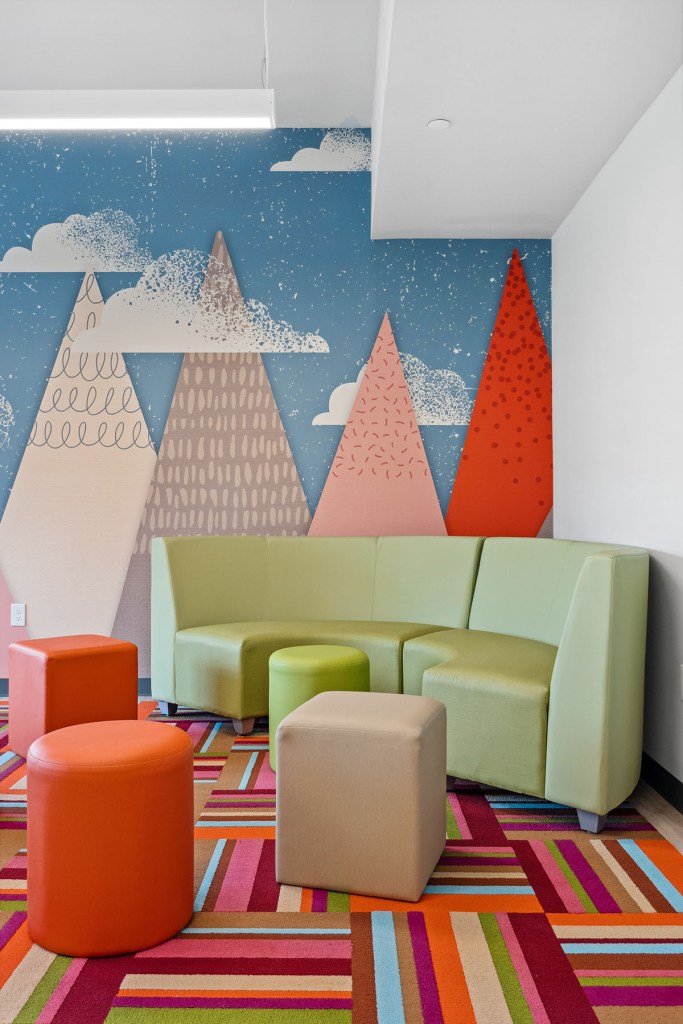
An abuser with enough willpower will find a secret shelter. A few years ago, before One Safe Place began displaying its address, Corrales remembers that a resident’s abuser showed up and parked across the street. Police were called and staff debated whether to move the resident to another location.
For reasons like this, One Safe Place develops a safety plan with each resident to help them navigate leaving the campus. For trips to school, work or grocery shopping, staff help survivors understand and manage the risks of going off site. And survivors are not allowed to post images or video from inside the complex to social media to protect the confidentiality of other residents.
To open One Safe Place, HAWC spent years building relationships with the police department, the district attorney’s office and neighboring businesses. HAWC partnered with the Houston Police Department’s Domestic Abuse Response Team to coordinate survivor safety. When One Safe Place calls, the team knows to respond immediately.
“If you don’t have the laws, the partners and a community that is ready to talk about domestic violence, [open shelters] will be a harder sell,” Corrales says.
A few years ago, the largest victim services organization in the United States considered opening a listed shelter. Safe Horizon in New York City helps about 250,000 people a year through its services, and shelters about 2,500 people. Leadership was hearing from survivors that they feel isolated and lonely at the hidden shelters they operate across the city.
“Part of healing is having access to your support system and being in community, and it’s hard to do that in a confidential setting,” says Olga Rodriguez-Vidal, Safe Horizon’s vice president of shelter operations.
So they initiated the Open Shelter Project, a research effort driven by Goodman, to understand how it could work for them.
Their conclusion? They’d love to open a listed shelter. It would mean being less punitive; for survivors who inadvertently exposed their location via social media, or were coerced into revealing their location by their abuser, discharge proceedings wouldn’t have to happen.
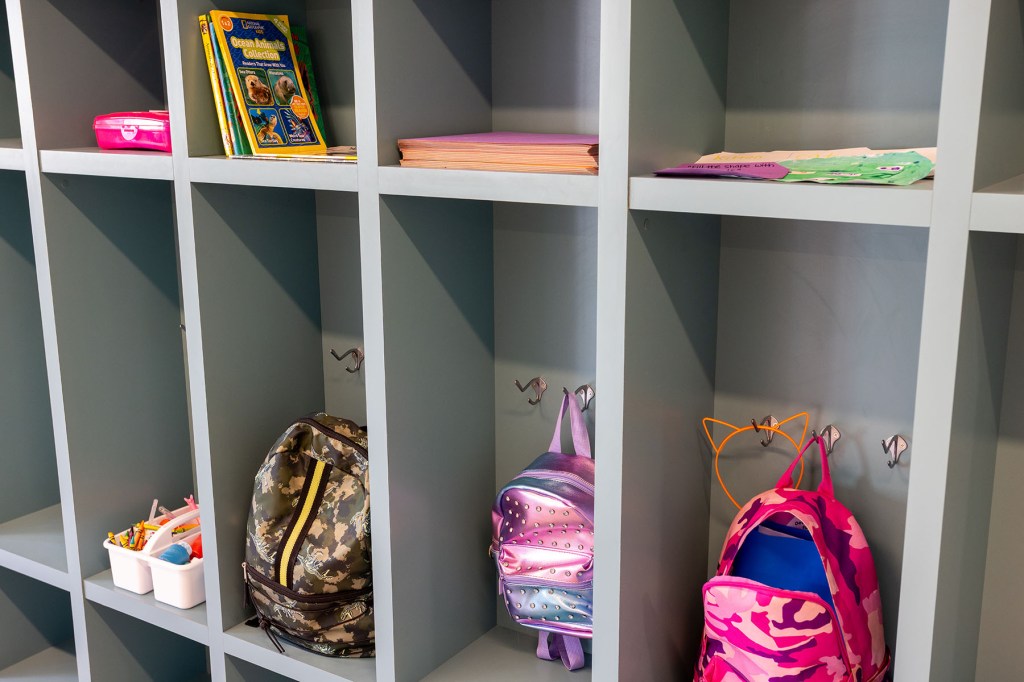
But there was one obstacle: money. In New York, a disclosed shelter is unprecedented. No one wants to fund an open domestic violence shelter, and then a survivor be found by her abuser.
“There’s a lot of saturation of domestic violence shelters in Manhattan, in the Bronx,” says Rodriguez-Vidal. “There really isn’t an appetite for this, because it’s so different than the industry standard.”
Rodriguez-Vidal acknowledges that some survivors need confidential housing, but opening a listed shelter would diversify the resources that are available for their clients.
Corrales and her team approached the open shelter concept knowing that domestic violence is a public health problem. One Safe Place is designed as a one-stop shop where survivors can connect with advocates, receive free legal help and forensic examinations, all in one place.
HAWC invested in security from the beginning. More than 80 cameras keep watch, and a concrete wall lines the perimeter. Guests are checked for firearms, which aren’t allowed onsite. Security guards monitor the campus 24 hours a day.
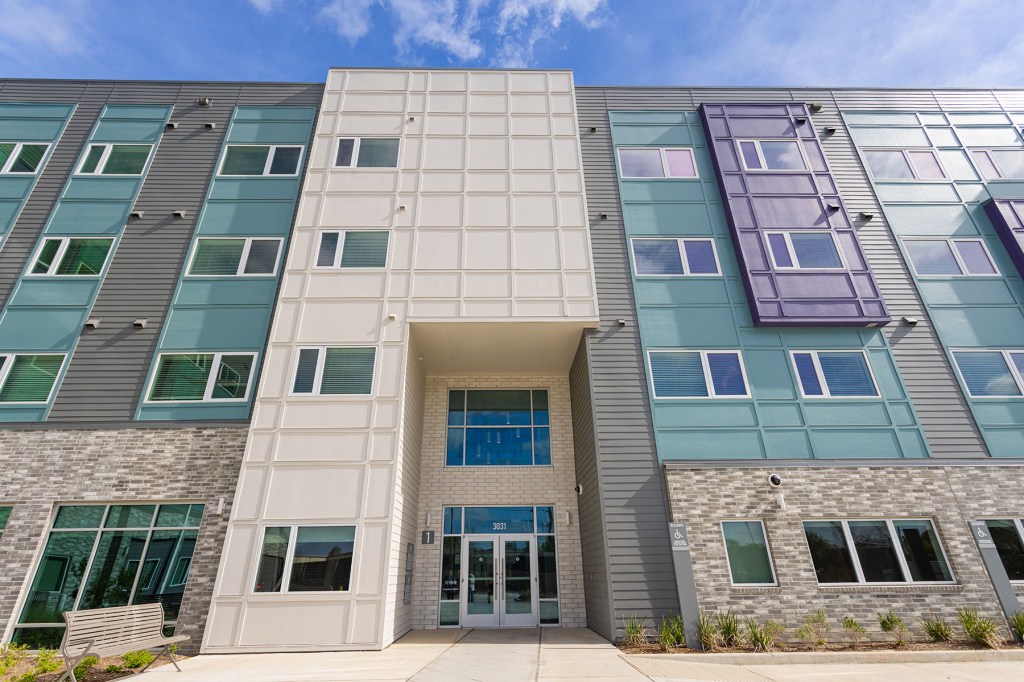
To an outsider, this might sound like a prison, but for survivors on the inside, according to Corrales, these measures help them feel safe. HAWC ran a brief pilot to ensure residents were comfortable with the security guards before making them a permanent fixture. And HAWC never shares information about the survivors staying there.
It’s a model that Corrales hopes will nudge the gender violence movement forward.
“I stand on the shoulders of many advocates, particularly women, who have paved the way for all of us. Without their work this would not be possible,” Corrales says.
Elizabeth Moss is an award-winning journalist based in Los Angeles. Moss likes writing solutions stories about child welfare, domestic violence, and health disparities. Her work has appeared in The 19th, AfroLA and San Francisco Business Times, among others. She has held multiple reporting fellowships, including a California Health Equity Fellowship at USC’s Center for Health Journalism. In the past, she worked as a podcast producer, fact-checker and researcher.
